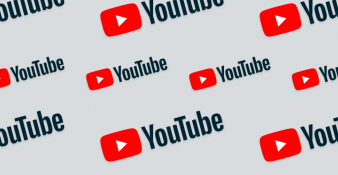Top 7 YouTubers (and what brands can learn from them)

YouTube is a sensational platform. The total number of people who use YouTube is now more than 1,300,000,000. Almost 5 billion videos are watched on YouTube every single day. Even on mobile alone, YouTube reaches more 18-49 year-olds than any cable network in the U.S. Surely, it’s a noisy space: 300 hours of video are uploaded on YouTube every day. Entertainers and educators that came to YouTube in hope of getting rich and famous have to face even more struggle than a marketer trying to sell a yoghurt brand among thousands and thousands of yoghurt brands. So people that made it to the top of the YouTube list are interesting for a whole number of reasons. They can help us answer the questions such as:
- What kind of content works best on YouTube?
- What kind of language/behavior works best on YouTube?
- What makes you stand out?
- What are some creative ideas/campaigns that worked in the past?
So let’s look at top 10 YouTube personal channels of 2017 according to Forbes, Business Insider and SocialBlade rankings.
1. PewDiePie
PewDiePie has been probably the most popular guy on YouTube for the past four years. Most of his time on YouTube he’s been playing video games and walking you through them. He has more than 54 million subscribers and his estimated salary is $15 millions. So what’s the secret?
PewDiePie’s success is the result of his personality and his relationship with the viewers. He calls his subscribers “bros”, he’s always happy, smiley and incredibly charismatic. He spends lots of time talking about subscribers, answering questions and showing that he appreciates his audience in all possible ways. He also swears a lot, jokes a lot, laughs, gets visibly scared and basically shows the whole range of emotions in response to a video game. He doesn’t avoid sensitive jokes and he isn’t afraid to offend anyone. He gets in social media trouble from time to time, but mostly people forgive his rare mistakes, because PewDiePie acts like your best friend from high school. And who doesn’t like that?
So if your brand is in the entertainment for teenagers/young adults category, you don’t need strict limits for your social media strategy. Be friendly and funny and experiment with your content. If you’re a business owner, hire the most charismatic person you can find.
Of course, it’s also worth pointing out that video gaming is one of the most popular categories on YouTube. If you’re in this business, I’m sure you already have a dozen of influencers reviewing your games online.
2. Smosh
This guy is an extremely popular Spanish YouTuber. He has 17.3 million subscribers, and he became known for his voiceovers of gameplay videos. He does things differently, though. He creates elaborate narratives and histories for the characters in his video games to make them “like a movie.”
What can we learn from that? Firstly, it’s always worth keeping in mind that 80% of viewers on YouTube are outside of the U.S. If your target audience isn’t English speaking, it’s not a reason to ditch YouTube. Secondly, of course, it tells us the importance of the story – something marketers have been preaching for years. With the trend switching to the imagery content, it’s important to remember that while the colorful picture will also work, the story will add massively to it.
4. Jenna Marbles
Jenna has 16.9 million subscribers and is one of the most recognisable YouTube celebrities. She does funny and silly videos about herself and her life. The video above is the one that went viral and made Jenna famous. Just by its name you can see that the idea is basically to make fun of yourself and the viewers. And that’s beautiful.
Her videos are very personal and unlike the videos of everyone described above, hers are not professionally edited. If they teach us anything, it’s that taking yourself (or your brand) not too seriously and being humble attracts people. Also, while calling your customers ugly might not be the best tactics for you, sometimes it’s also okay to make fun of your audience. Preferably, in a nice way.
5. Rosanna Pansino
Rosanna has the nerdiest cooking channel on the Internet. Cooking isn’t exactly a rare topic – half of TV channels have some kind of cooking programs, then there are books, and the Internet (blogs, chef’s websites, YouTube…). On top of that there’s The Great British Bake Off with its 14 million viewers. That indeed might be one of the most competitive categories. Yet the video above has more than 166 million views. And the author’s estimated salary in 2016 was $6 million.
First of all, Rosanna’s success comes from her acting skills – she isn’t simply cooking, she’s acting the hell out of it. Then, she differentiated her program from the others by calling it “nerdy” (extra points for self-awareness) and targeting the audience that’s into both cooking and Disney movies, rainbows, Nickelodeon and Minecraft. Her videos are like a family movies, only that while watching them adults can actually follow the recipe and make a dinner while the kids enjoy the process. That is opposed to the usual situation when the kids are bored and asking for attention while the parent is trying to follow everything the cook says. Presumably, that’s the cornerstone of Rosanna’s enormous success – picking the right, specific target audience and sticking to it.













